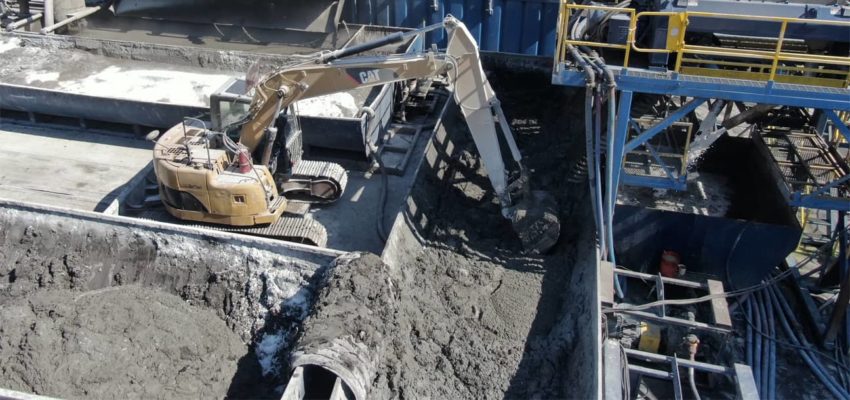Dual centrifugation is the use of two centrifuges to recover barite and remove harmful drilled solids. Typically, the barite recovery centrifuge, or the “low speed” centrifuge, uses a lower G-force in the bowl to recover the higher specific gravity barite and return it to the active system. This reduces the usage of the expensive and finite mud additive, barite. The polisher centrifuge, or “high speed” centrifuge, processes the barite-less drilling fluid at the highest possible G-force achievable by the machine to reach maximum solids removal. It returns the polished fluid back to the circulating system.
Pros:
- Recovery of barite.
- Maximally polished fluid.
- Higher machine throughput capabilities relative to “stripping”.
- Reduces dilution requirements.
Cons:
- Inevitably, while recovering barite, some larger particle LGS will also be recovered.
- Particle size degradation.
- Though throughput capabilities are relatively high, only 1/6 to 1/4 of the total circulating system can be processed (depending on mud pump rate or circulating rate).
Ultimately, in weighted fluids, particularly higher weighted fluids (12.0 ppg +), the dual centrifuge or barite recovery process is highly recommended. The ability to recover the majority of barite in weighted fluids greatly reduces barite usage, trucking and overall dilution necessities.
The KSW Difference:
With KSW’s centrifuge options, your operations will see undeniable improvements! Our barite recovery data gathering process allows us to pinpoint exactly how much barite we are losing to polishing versus returning to the active system.This allows drilling fluid professionals to reliably calculate barite usage. They can then pull their wells in at less cost without sacrificing performance. Our field technicians are highly adept at gathering applicable data, turning it into usable, real-world information to improve processes, saving money for the mud company and operator alike.
Previous news – The Dewatering Process and the KSW Advantage





